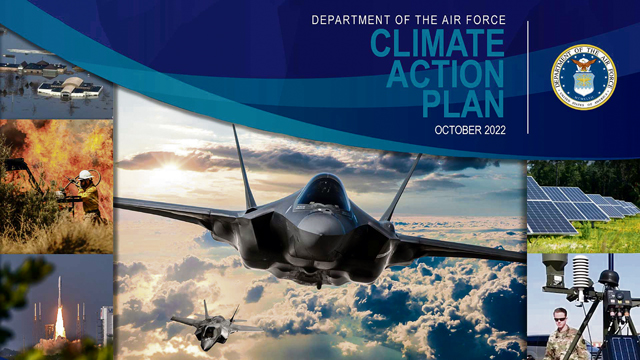
The Department of the Air Force released its Climate Action Plan Oct. 4, which defines how it will preserve operational capability, increase resiliency, and do its part to help mitigate future climate impacts through specific and measurable objectives and key results. It lays out its enterprise-wide approach to ensuring policies, technology innovation, and evolving operations remain relevant in a changing climate.
“Make no mistake — the department’s mission remains to fly, fight, and win, anytime and anywhere. We are focused on modernization and improving our operational posture relative to our pacing challenge: China. We remain ready to respond and achieve air and space dominance when and where the nation needs us,” said Secretary of the Air Force Frank Kendall. “Our mission remains unchanged, but we recognize that the world is facing ongoing and accelerating climate change and we must be prepared to respond, fight, and win in this constantly changing world.”
The plan outlines three major priorities that ensure the Department of the Air Force maintains the ability to operate under a changing climate, preserves operational capability, protects its systems, and contributes toward enhancing climate change mitigation.
Maintain air and space dominance in the face of climate risks: Invest in climate-ready and resilient infrastructure and facilities so our installations are better able to project air and space combat power.
Make climate informed decisions: Develop a climate-informed workforce, integrate security implications of climate change into Department strategy, planning, training, and operations, and incorporate climate considerations into Department requirements, acquisition, logistics, supply chain processes, and wargaming.
Optimize energy use and pursue alternative energy sources: Expand operational capability and power projection to support operations globally while simultaneously reducing greenhouse gas emissions and adopting cost-competitive alternative energy sources.
The department will provide updates as necessary to address new policies, technology innovation and evolving missions that answer emerging climate concerns.


